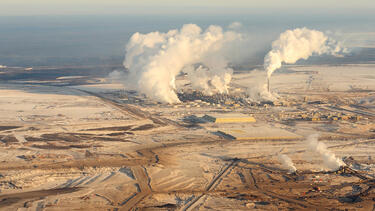Is the Canadian Dollar a Petrocurrency?
Since last summer, the price of oil has plummeted to its lowest point in years, and so has the Canadian dollar, sparking debate as to how closely they’re linked. Werner Antweiler of UBC’s Sauder School of Business, a member school in the Global Network for Advanced Management, says that Canada’s dollar is acting like a classic petrocurrency.

Q: What is a petrocurrency?
In simple terms, a petrocurrency is a currency of an oil-producing country—such as Canada—whose oil exports as a share of total exports are sufficiently large enough that the currency’s value rises and falls along with the price of oil. In other words, a petrocurrency appreciates when the oil price rises and depreciates when the oil price falls.
 Q: What predicts the value of our currency?
Q: What predicts the value of our currency?
The exchange rate of the Canadian dollar against other major currencies is determined by the market: supply and demand. Macroeconomic factors play a role as well. If the Canadian dollar deviates too far from purchasing power parity, arbitrage opportunities help correct an overvaluation or undervaluation. Cross-border shopping is the prime example of such arbitrage. Until recently, commodity prices were not thought to be major drivers of the exchange rate. During the 1990s oil prices were relatively flat and thus the effect from oil prices remained very small.
Q: Does the oil price influence the exchange rate today?
The diagram below shows how much the exchange rate of the Canadian dollar against the U.S. dollar moves along with the price of crude oil. Empirically, the correlation is very strong. Roughly nine-tenths of the variation in the exchange rate can be accounted for by changes in the price of crude oil.
A more detailed analysis shows that every one-dollar (US) increase in the West Texas Intermediate (WTI) benchmark price for crude oil leads to an appreciation of the Canadian dollar of 0.417 cents (US). We can also use this regression to predict exchange rates. At a WTI index of $100 US, a Canadian dollar should buy about 99.8 US cents, while at a WTI index of $60 US, a Canadian dollar should buy only about 83.12 US cents.
Another way to analyze the data is to estimate the elasticity of the exchange rate with respect to the price of oil. This approach reveals that a 10% increase in oil prices translates into a 3% appreciation of the Canadian dollar—an elasticity of 0.3.
Q: Why has the Canadian dollar become a petrocurrency?
During the 1980s and 1990s, energy’s share in trade hovered around the 5% mark. That changed as we entered the 21st century. By 2014, energy’s share had nearly tripled to about 15%. This is even more pronounced when one only looks at exports, where that share has reached 25% by 2014. That is what has fundamentally shifted and can explain why oil prices matter a whole lot more than they did a decade or two earlier.
Q: Will the Canadian dollar remain a petrocurrency?
As long as oil exports remain a strong component of Canada’s exports, oil prices will influence the value of the Canadian dollar. If the share of oil and gas exports increases further, the link between oil prices and the exchange rate may become even stronger.
This article was contributed by the Sauder School of Business to Global Network Perspectives, the online magazine of the Global Network for Advanced Management, and is republished with permission.